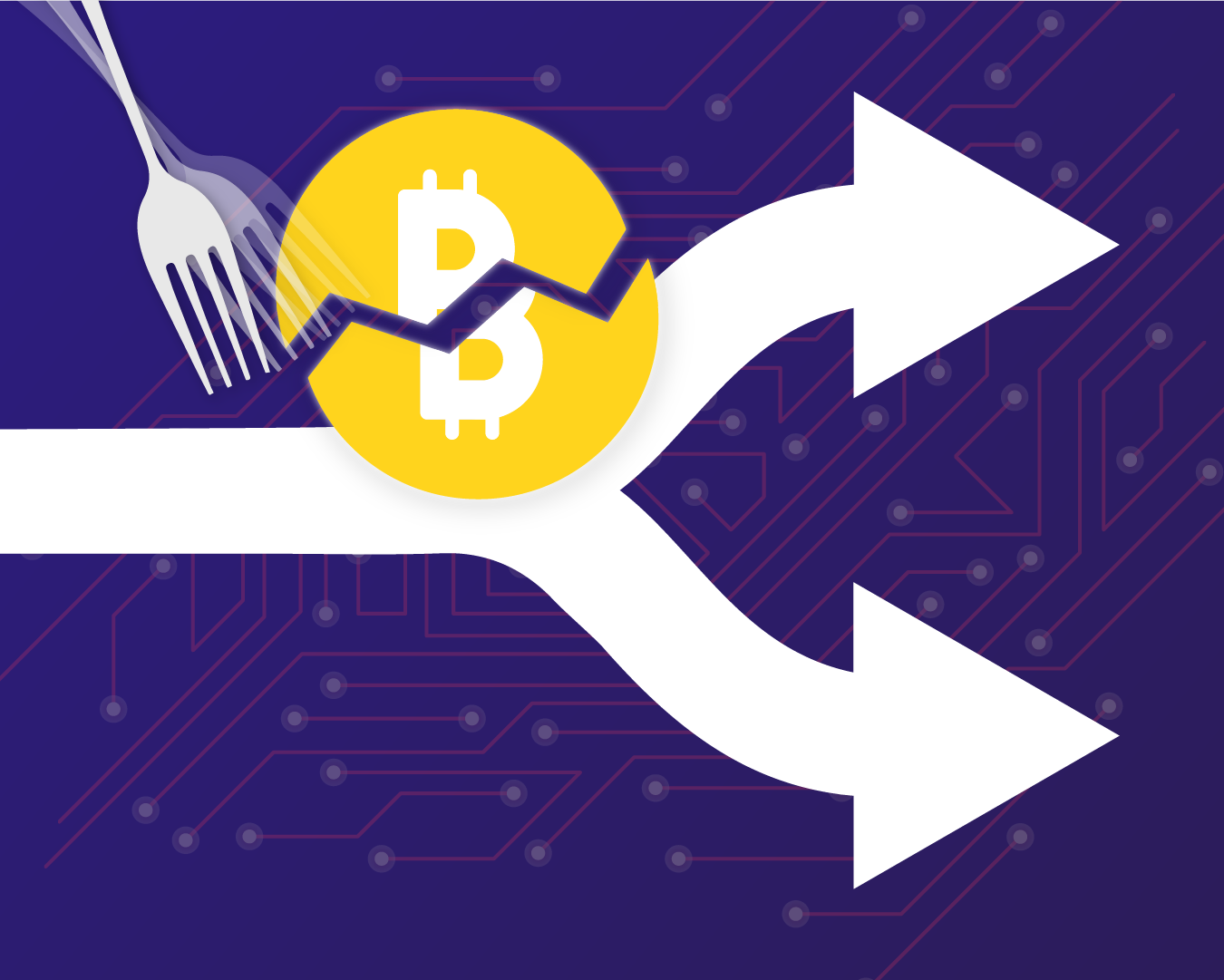As you delve deeper into understanding the intricate ins and outs of the cryptoworld, you’re sure to come across the terms “hard fork” and “soft fork”. In this article we’re going to explain exactly what these mean and why they’re important, as we help you navigate the markets with confidence and ease. Let’s dive into the difference between a hard fork and a soft fork, but first let’s start with the basics.
What Is A Fork?
We’re sure that you’re familiar with the item you’d find in the kitchen, but in the crypto world forks have an entirely different meaning. Forks refer to upgrades in the blockchain network, a change in software rules. In the constantly evolving crypto industry, forks allow innovation and development to take centre stage. As we get a little more technical, let’s break down the difference between a hard fork and a soft fork.

What is A Soft Fork?
Understanding that forks are updates on a blockchain network, the biggest difference between a hard fork and a soft fork is the backward-compatibility.
With hard forks, the network is split into two and users need to pick which network they want to continue with.
With soft forks, the network’s rules are updated but the chains can co-exist and older nodes (ones that have not updated) can still participate in verifying transactions. In soft forks, users are generally unaware of the updates and can continue to use the network and cryptocurrency as usual.
An example of a soft fork would be SegWit, an update implemented onto the Bitcoin blockchain. This update changed the format of blocks and transactions but still allowed all nodes (whether updated or not) to continue validating activity. The software update improved the network’s functionality and the end user was none the wiser.
What Is A Hard Fork?
We’ve covered what is a soft fork, let’s uncover what a hard fork is. Hard forks are when a network splits into two, but cannot coexist. All nodes will have to decide whether they want to upgrade and join the new network, or remain as is and stay with the old network. In some cases these are as a result of community disagreements, in other cases it is simply a voluntary software update that will benefit all involved.
An example of a hard fork is the Bitcoin and Bitcoin Cash hard fork in August 2017. The hard fork split the network into two, allowing one to continue to run as is, and the other to run with a few additional changes. Bitcoin Cash wanted a larger block size to incorporate more transactions into a block and increase scalability, while Bitcoin wanted to remain as is.
This split the community into two and allowed the Bitcoin Cash team to develop their larger block size, and Bitcoin to function as usual. Nodes who did not upgrade could not validate transactions on the Bitcoin Cash network, and upgraded Bitcoin Cash nodes could not validate transactions on the Bitcoin network.
In the case of the Bitcoin and Bitcoin Cash hard fork, the two networks each had their own cryptocurrencies, and were able to independently run alongside each other, with no interference.
Soft Forks vs Hard Forks
At the end of the day, hard forks and soft forks serve two very different purposes. Soft forks are typically implemented to incorporate small changes on the network, while hard forks are necessary for big changes to the network, often resulting in a new cryptocurrency.
Hard forks tend to sometimes be controversial, where developers have presented ideas that are radically different to how others want to see the network change. Hard forks allow the new ideas to be implemented while those in disagreement can continue using the network as is.
Why Blockchain Needs Forks
In the decentralized world of blockchain and cryptocurrencies, hard forks and soft forks allow innovation to take place. With no central figure in charge, development is up to the community and forks allow the implementation of these changes.
These mechanisms allow the industry as a whole to adapt, grow and prosper, and all in a decentralized nature. When understanding the difference between a hard fork and a soft fork, understanding that they are vital to the development of the blockchain and cryptocurrency industry is key.
_________________________________________________________
Oobit Technologies Pte, 50 Raffles Place #37-00 Singapore Land Tower, Singapore (048623). is a company registered in Singapore (no:201716443G), that has been approved as Appointed Representative of Oobit Technologies OÜ, Harju maakond, Tallinn, Lasnamäe linnaosa, Väike-Paala tn 2, 11415, (no: 14852617 ). Which is authorized and regulated by the FIU (no: FVR001421 and FRK001304).

